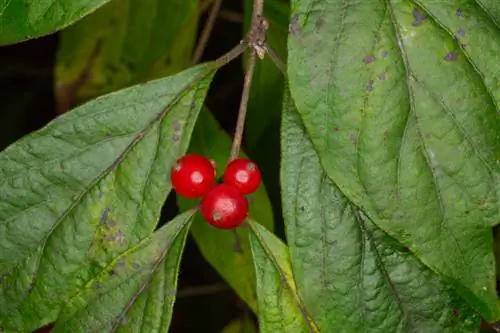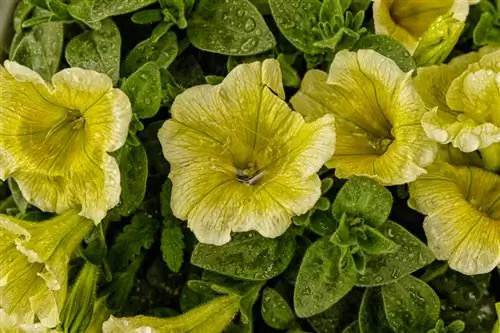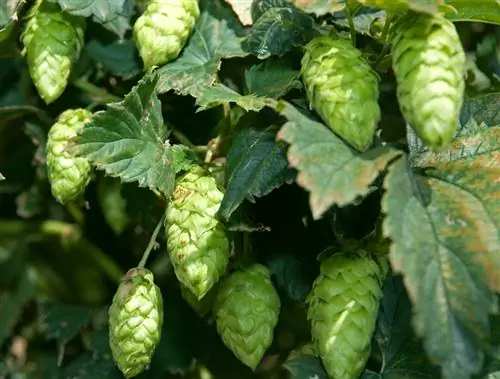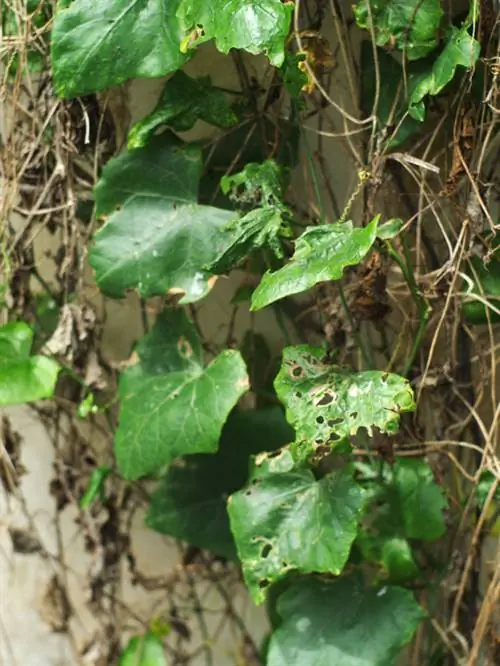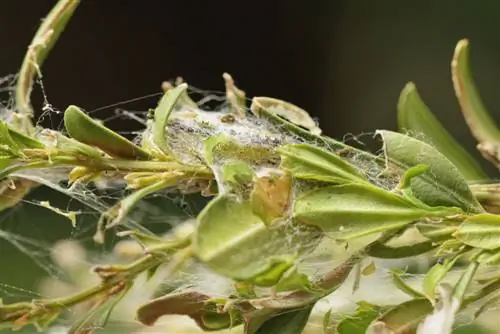- Author admin [email protected].
- Public 2023-12-16 16:46.
- Last modified 2025-01-23 11:20.
Shortly after purchasing it - just a few weeks ago - the cyclamen still looked immaculate. Now it stands in the cozy, warm living room and becomes more pitiful every day. Read below to find out what diseases and pests can be behind it!

What diseases can affect cyclamen?
Cyclamens can suffer from diseases such as gray mold or tuber rot, which are usually caused by incorrect care such as too much water or incorrect choice of location. Pests such as black weevils or cyclamen mites can also cause damage to leaves or roots.
Detecting and combating diseases
Basically, there are no specific diseases that regularly affect cyclamens. Illnesses can only occur if care is incorrect. Gray mold and tuber rot are the most common. Cyclamen wilt (fungal pathogen) is less common.
Gray horse
The gray mold can be recognized, as the name suggests, by a gray and mold-like coating on the leaves. It mainly occurs when the cyclamen is too warm and the soil is too moist. This fungal pathogen can cause the plant to die
For gray mold, note the following:
- not always treatable
- Prevention is better than cure
- repot immediately if infested
- Change location (not warmer than 20 °C)
- water moderately
- Air the room regularly
Blight
Blight occurs when the cyclamen is watered too generously so that the soil is wet. In addition, wilted and unremoved leaves promote this disease.
As a rule, there is no salvation in sight with tuber rot, even if the cyclamen is repotted. Therefore the motto is: prevention. Water the cyclamen from below, regularly but not too abundantly. You should also remove wilted plant parts immediately.
Identify and combat pests
The black weevil and its larvae feast on the leaves of the cyclamen. You can get rid of this pest by going out at night with a headlamp and catching the beetles (nocturnal) in the act and collecting them.
The cyclamen mite can also be dangerous. It eats especially the tips of the shoots and misshapes leaves and flowers. Their larvae live in the soil and eat the tubers and roots. Quickly repot the cyclamen into a new substrate and rinse the roots first
Tips & Tricks
Yellowed leaves are not necessarily an indication of disease. Most of the time this is due to care errors.


